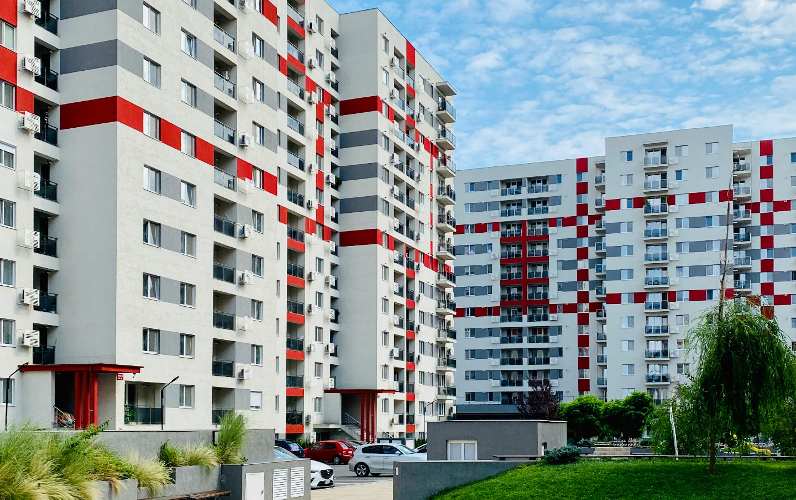Two reports released recently have taken alternative views on housing affordability, with one noting increased supply doesn’t always help renters and the other calling for widespread rezoning reforms to allow more houses to be built.
CoreLogic’s head of residential research Australia Eliza Owen cited the Melbourne market where she said a current ‘oversupply’ of housing has seen home values decline 0.9% in the three months to January.
This has occurred alongside a rise in total listings and lower property clearance rates.
Melbourne's 'oversupply' issue
CoreLogic data estimates there were 81,203 dwelling sales in the Victorian capital in the 2023 calendar year, indicating the market demand of those “willing and able” to buy housing.
The number of new listings added to the market was considerably higher at more than 90,000 homes.
Ms Owen said in that sense, the market was oversupplied in 2023 which caused purchasing values to slip.
However, she noted from the perspective of people needing somewhere live, oversupply did not ease rental demand.
“The answer is in recognising that there is a difference between the market for purchasing housing and the need for somewhere to live,” Ms Owen said.
Rental market continues to be tight
Rental vacancy rates across Melbourne were less than 1% in 2023, compared to a historic five-year average of 2.2%.
Rent values jumped 10.7% in 2023. The state government’s housing service Homes Victoria saw a state-wide 4.7% increase in new housing applicants resulting from homelessness last calendar year.
Ms Owen said the change in purchase values fluctuated amid changes in policy settings (higher interest rates among them) while rents continued to move consistently higher.
“It probably means that buyer demand will be particularly sensitive to changes in interest rates, or other aspects of demand that make it easier to go from renting to owning,” she said.
She said it’s important to avoid conflating a decline in dwelling values as a step toward solving the housing crisis and acknowledging some households will never be in the market to buy.
“In these cases, it’s important to have a consistent supply of social housing outside of market fluctuations to ensure adequate housing for those that just need somewhere to live,” she said.
Build and they will come
A report from the Centre for Independent Studies argues increasing housing supply is the single-biggest factor in addressing housing affordability for all sections of the market.
The study’s author Peter Tulip says the solution to Australia’s current housing affordability issue is that simple.
“You can make it complicated if you want, but let's focus on the main issue” he told Savings.com.au.
The Housing Affordability and Supply Restriction report calls for the lifting of planning restrictions to allow for higher density new home building in cities and rezoning more residential land in regional areas.
“Whether it is private or public, whether it is apartments or houses, whether it is infill or greenfields, these are all secondary questions,” he said.
The Auckland experiment
The study examined the lifting of density restrictions in Auckland between 2013-2016 which allowed medium-density housing development in about three-quarters of the city.
It triggered a boom in construction, approximately doubling the rate of building in Auckland, and added around 5% to the city’s total dwelling stock (not allowing for demolitions).
One study estimated rents fell by between 14-35% of what they otherwise would have been.
The data was supported by similar market effects when the New South Wales government freed up regulations around granny flats in 2009, the study found.
It led to a five-fold increase in construction and added about 49,000 extra dwellings by 2020, the report said.
The 'filtering' effect
For the lower end of market, the study refers to a “filtering” effect where wealthier residents would take up more expensive, newly built housing, vacating their previous homes that fall in price.
In turn, existing housing would be taken up by those on lower incomes, filtering through so low-income renters can access the lower-priced end of the private rental market.
“Margins on old rentals will fall,” Mr Tulip said.
“But that is because we are increasing the total amount of housing. The overall quantity of rentals will also probably increase.”
What about the NIMBYs?
The report noted Australian are generally averse to seeing higher density housing developments in their locales, but Mr Tulip said the mindset had to change for the greater good.
“I think these fears are overstated. Lots of people like high density,” he said.
“When density has increased, for example Chatswood in Sydney or Box Hill in Melbourne, amenity of living in the suburb as gauged by house prices, has not fallen.”
Mr Tulip acknowledged the reluctance of governments at all levels to push higher density housing for fear of putting voters offside.
“But I think this is changing as young people realise how unfair the system has been," he said.
Image by Saru Robert on Unsplash

Ready, Set, Buy!
Learn everything you need to know about buying property – from choosing the right property and home loan, to the purchasing process, tips to save money and more!
With bonus Q&A sheet and Crossword!

